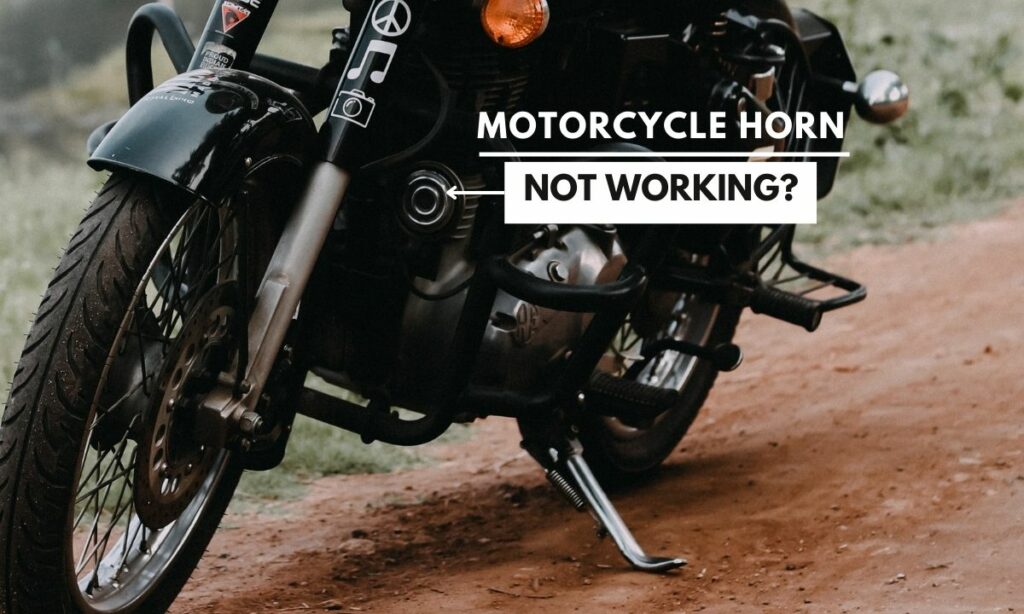Your motorcycle needs a fully functioning horn. Without a sound horn, you can get into tricky and even dangerous situations.
The horn helps you to make your presence known.
But, what if the motorcycle horn is not working?
Here are the reasons why your motorcycle horn is not functioning:
- The battery is drained
- The horn fuse is blown
- Wire connections are loose
- The horn locknut is loosened (most common cause)
- The horn switch is faulty
Let’s dive into each of these causes and how you can fix them.
#1: Drained battery
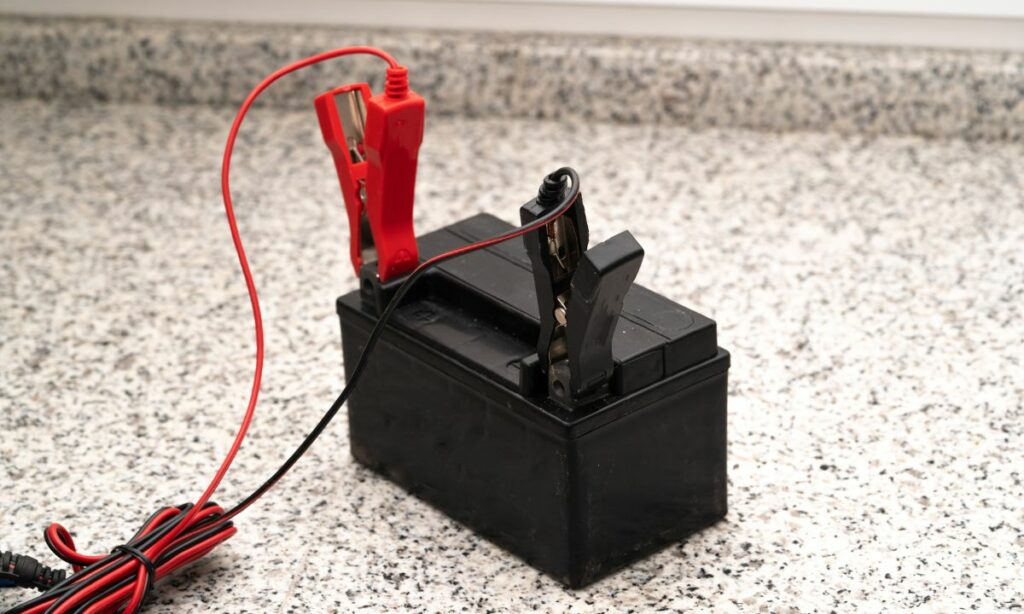
First things first.
We need to make sure if it is a horn-specific problem or a battery problem.
If the battery is drained out, then the horn will not make a sound.
Or it will make a feeble sound. Giving the impression that the horn is not working.
So let’s get this out of the way.
Inspection
Now, how to check if it is a battery problem and not a horn problem?
If the battery is drained, not only the horn but all the electronic components will be facing troubles.
So check them.
Check the headlight. Is it dimming? If yes, the battery is the culprit.
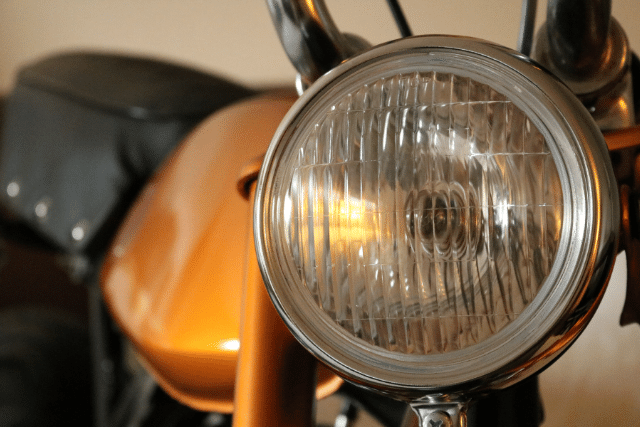
Facing starting problems as well? Motorcycle ignition is taking a few tries? For sure, it is a battery problem.
That’s it.
Dimming headlights, motorcycle starting problems along with the horn not working should point you toward the battery.
Solution
If the battery is drained and has a low charge, then start the engine and idle it for some time.
This should give enough time for the motorcycle to charge the battery.
This is a simple scenario.
But oftentimes, the problems can be much more complicated.
If the battery is dead or battery is not charging, you might have to take a deep inspection.
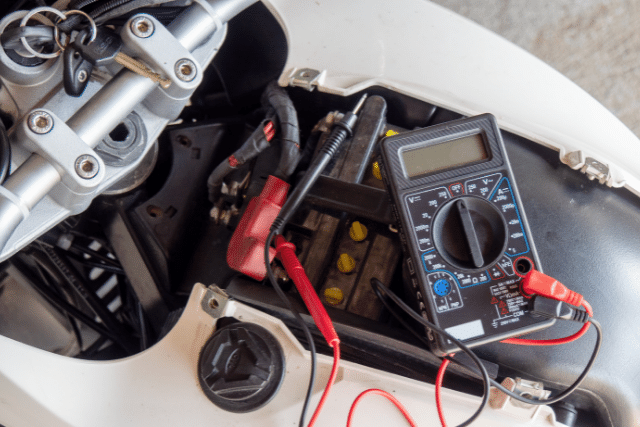
Since we are discussing horn problems here, we won’t go into further details on battery here. But here is our guide on battery charging problems.
Without further ado, let’s start looking into the horn-specific problems then.
#2: Blown horn fuse

A motorcycle fuse is an electrical safety device that protects a circuit from overcurrent.
If there is an overcurrent in the electric circuit, then the fuse sacrifices itself and blows out to safeguard the circuit.
Since there are various electric circuits in the motorcycles, they need fuses to protect them against overcurrent.
And a horn has a separate fuse as well for its circuit.
The fuse can blow up because of any of the problems in the electric circuits. Ranging from short circuits to overloading to mismatched loads to device failure.
Inspection
To confirm it is indeed a blown fuse causing the horn to not work in your motorcycle, you need to check the fuse.
Now, how to go about it?
Most motorcycles have their fuses covered in a box.
This box is obviously called – a fuse box cover (duh!). The fuse box cover is located directly below the seat and beside the battery.
Open the fuse box cover and you will see around 6-15 fuses depending on the number of circuits in the motorcycle.
For each circuit, there is a rated amperage. You can check these current ratings on the fuses where they will have markings like – 7.5, 10, 20, 30.

These numbers on the fuses are their circuit’s amperage rating. If the current exceeds the rating, the fuse will blow up and gets damaged.
Check the horn fuse.
There will be a fuse description indicating which fuse is the horn fuse.
Else, just check all fuses. No harm to be thorough.
To check whether the fuse is blown or not, all you need to do is see the metal strip inside the fuse. The U-shaped metal strip will be broken if the fuse is blown.
The strip will remain intact if the fuse is working properly and has NOT blown.
Solution
If the horn fuse is blown, the only solution is to replace the blown horn fuse with a new one.
You must always replace a blown fuse with a spare fuse of the same rating.
Few motorcycles provide spare fuses which are located near the battery. So, check for spare fuses near the battery in case you have been provided with them.
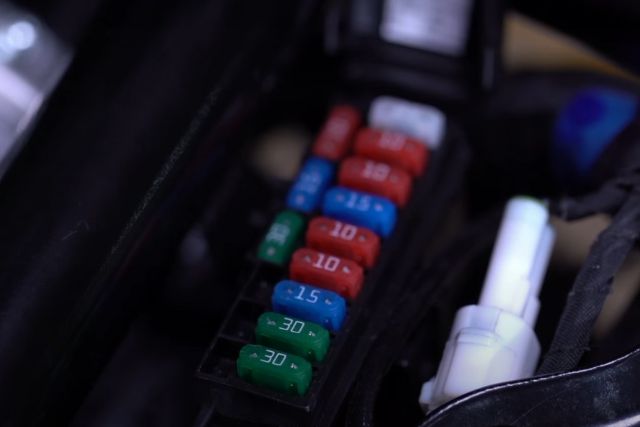
If not, buy a new fuse and make sure the amperage rating is the same.
Lastly, changing the fuse is easy.
You need to pull out the blown fuse, if not already, and plug in the new fuse in place. Then close the fuse box cover and reinstall the motorcycle seat (here is a step-by-step guide to replacing a blown fuse).
#3: Loose wire connections

We are going to get our hands dirty now.
Once you have confirmed there are no problems with the battery and the fuse, it’s time to check the horn itself.
Not the horn button.
But the horn itself.
Let’s spot the horn and check its wiring connection.
Inspection
The motorcycle horn is located right in front of the engine facing toward the front wheel.
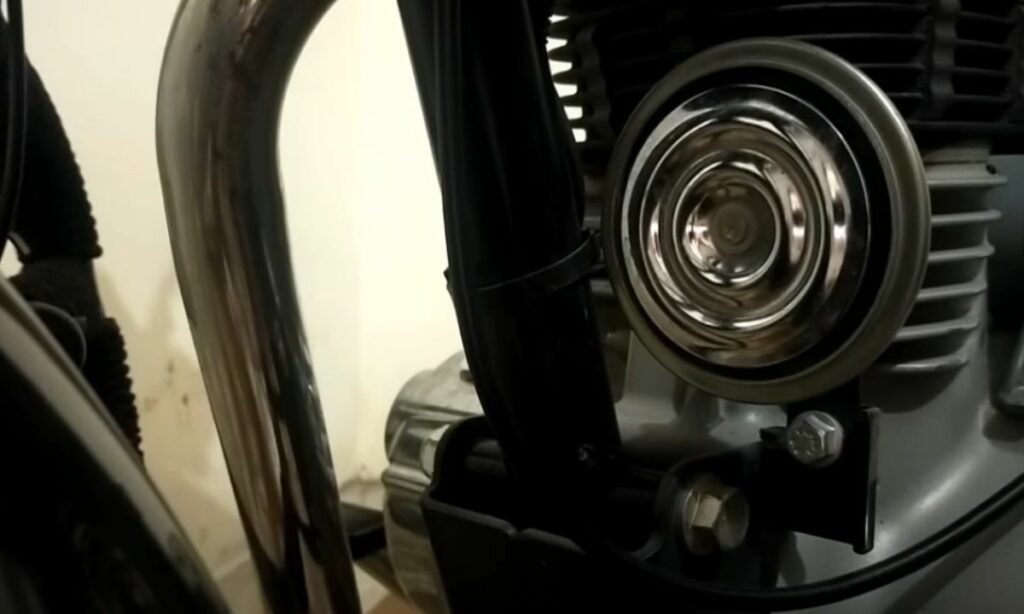
If you are motorcycle is air-cooled, you will spot it easily.
But, on the other hand, if your motorcycle is liquid-cooled – the radiator makes it tough to spot.
Also, if your motorcycle has side casings, it’s difficult again. You need to remove the casing to spot the horn.
Now that we know where the horn is, time to check the wiring.
Check the horn closely.
There are 2 wires connecting to it. One comes from the battery. And the other from the horn switch.

Both these wires should be connected to the horn properly.
If any one of the wires has come off or fitted loosely, then a loose wire connection is the problem.
Solution
Now. A loose wire connection is not a big deal.
It’s a 1-minute fix.
If the wire has come off (either of the battery wire or the horn switch wire or both), then plug the wire back into the horn.
Sometimes, the wires look like they are fitted. But they are not snugly fit. So check that as well.
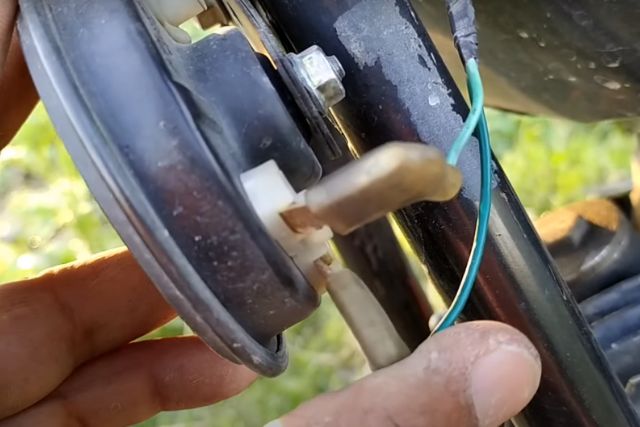
Ensure that both the wires are tightly fit into the motorcycle horn.
That should solve the loose wire connection problem.
If this is not the issue, let’s move on to the next.
#4: Loosened horn locknut

This is the single most common cause of a motorcycle not working.
At least for me, 4 out of the 5 times, a loosened locknut in the horn was the culprit.
So, let’s correct it.
Inspection
There isn’t much inspection here.
I will be honest, this is going to feel more like a trial-and-error approach.
But somehow it works.
Okay. Let’s find the locknut first.
We know where the horn is in a motorcycle.
It is located right in front of the engine towards the front wheel.

When you look at it from the engine side, you will notice a locknut.
I am not talking about the clamping nuts. These clamping nuts clamp the horn to the motorcycle.
I am talking about the locknut that keeps the horn components together.
The locknut sometimes has a rubber covering on it.
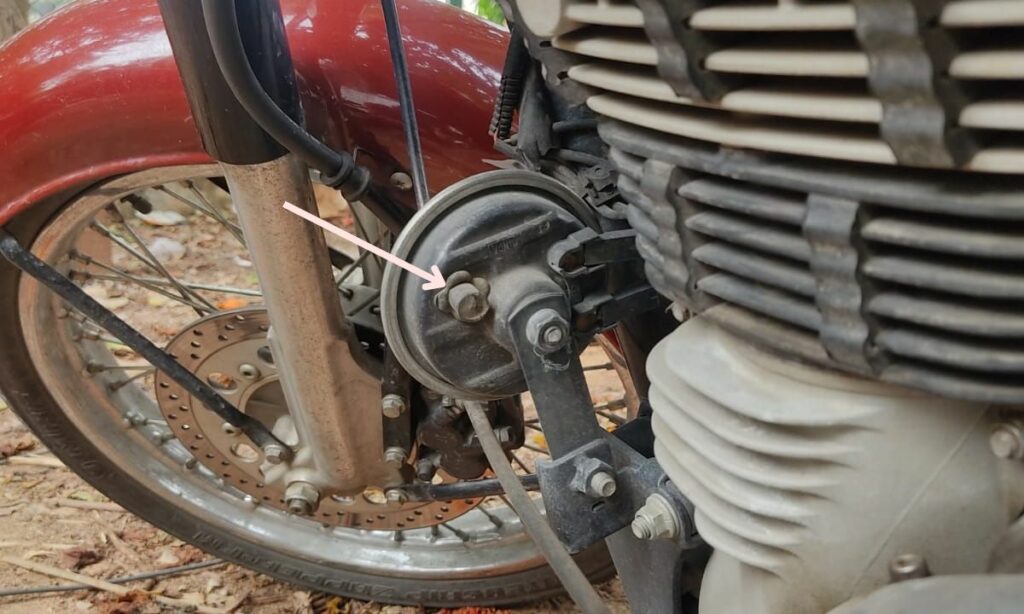
The locknut sometimes gets loosened. Mostly due to usage and vibration.
All we need to do is tighten it.
Solution
A loosened locknut is a primary cause of the horn not working.
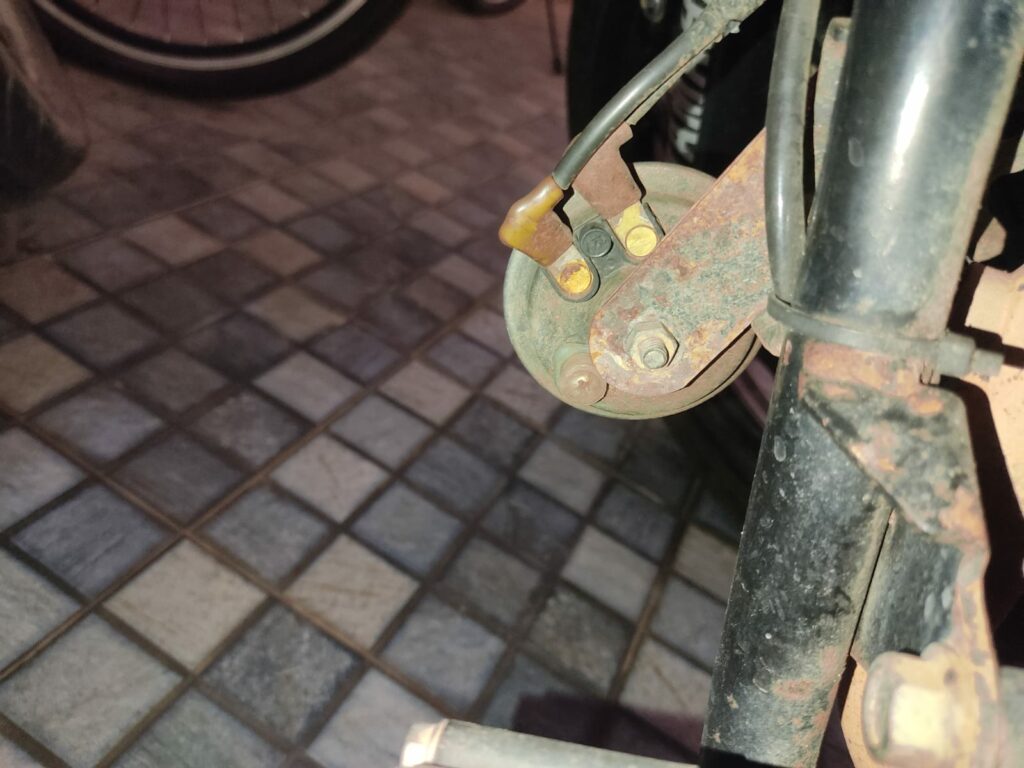
How does a locknut prevent the horn from functioning?
Whenever you press the horn button, the electromagnetic circuit in the horn closes to produce the horn sound.
The loosened locknut makes it difficult to close the electromagnet. Since the circuit is not closing, there is no horn sound produced.
All we need to fix is – tighten the locknut.
Take a screwdriver.
Place it in the locknut and rotate it clockwise.

The theory sounds simple. But when you do it, you might have to tighten a bit and loosen a bit to get the right sound.
It’s a bit of trial and error.
So with each tightening, press the horn button and check the sound. And then adjust it accordingly.
#5: Faulty horn switch
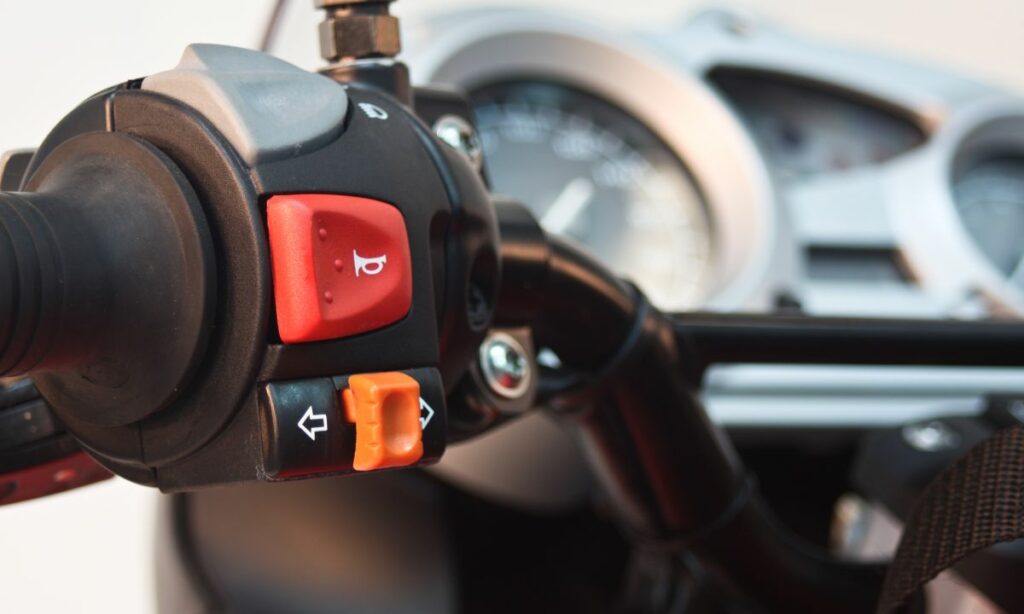
The last common issue is a faulty horn switch.
The horn switch not working properly can be because of these reasons:
- rust formation
- the spring is broken
- lots of dirt accumulation
Any of the above 3 reasons can result in a faulty horn switch.
Inspection
Now, how to confirm it’s the switch problem?
Try pressing the horn switch.
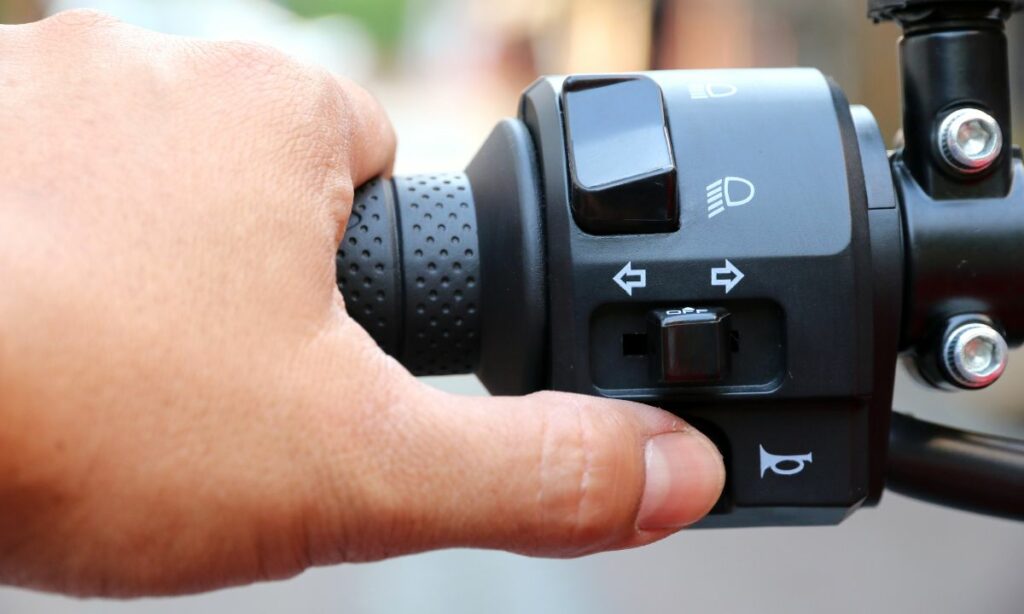
Are you able to shift it smoothly? Can you press the switch completely?
If not, there is a problem.
It’s time to open up the horn switch.
Once you have opened up the switch, look for spring breakage, rust formation, and dirt accumulation.
Solution
If the spring is broken, you need to replace it. Much better, you can go for replacing the horn switch itself.
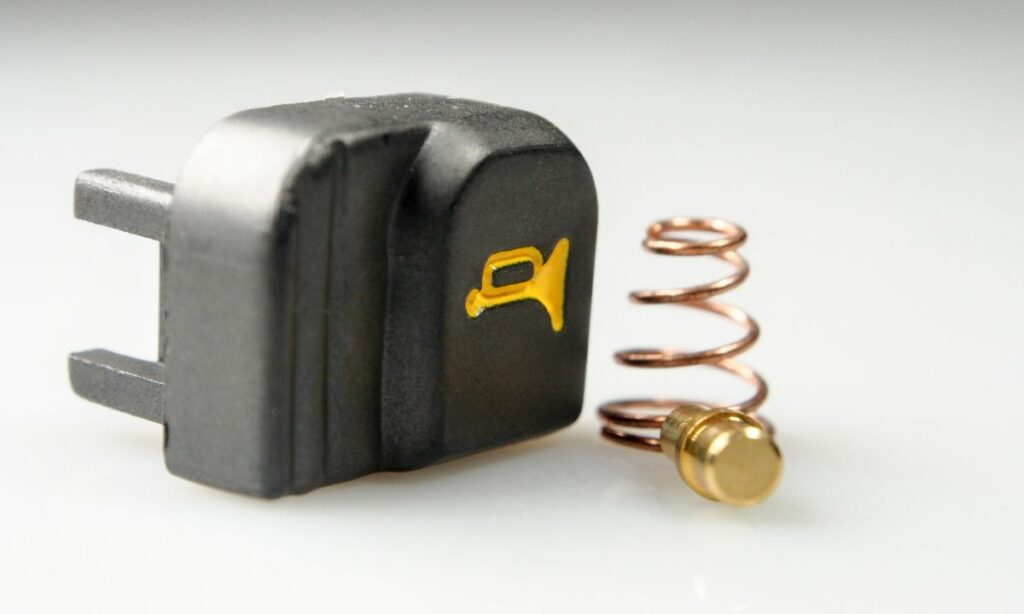
If there is rust or dirt accumulation, clean them.
Use a spray. A maintenance spray, anti-corrosion spray, rust protection spray, or even gasoline (although not the best) works. Spray it on the switch and wiring.
Next, clean it with a wire brush. You can opt for an old toothbrush as well. That’s how I did it. At last, wipe with a dry cloth.
Fit the horn switch back. Now, press the button and check the horn sound.
All the above checks and solutions should be enough to address your motorcycle horn issue.
To Summarize
Let’s quickly summarize the checks and solutions you need to try if your motorcycle horn is not working:
- Check 1: Battery. Ensure that this is not a battery problem. And is indeed a horn problem.
- Check 2: Fuse. Check the horn fuse in the fuse box. If the fuse is blown, replace it with a fuse of the same current rating.
- Check 3: Loose wiring. Check whether one or both of the two wires connected to the horn has come off. If yes, connect it properly.
- Check 4: Locknut. The horn’s locknut might have loosened. Tighten it with a screwdriver.
- Check 5: Horn switch. Check for rust, dirt, or spring breakage in the horn switch. Clean or replace the switch if necessary.
- The above solutions should solve the horn malfunctioning problem. There is one last fix though. The horn itself might have gone bad and is damaged. The only solution here is to replace the horn itself.
